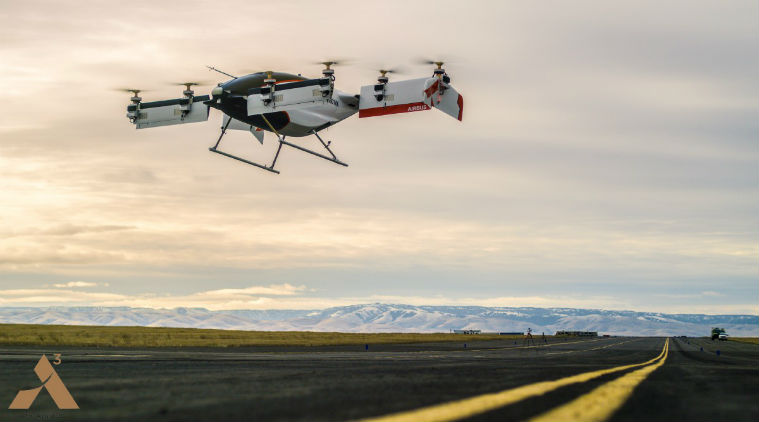 Vahana, the aviation start-up backed by Airbus, recently had the first ever successful flight of its self-piloted air taxi. (Image credit: Airbus)
Vahana, the aviation start-up backed by Airbus, recently had the first ever successful flight of its self-piloted air taxi. (Image credit: Airbus)
Even though autonomous flying taxis are years away, but there’s no denying to the fact that a lot of companies have shown interest to make pilotless air travel a reality. Vahana, the aviation start-up backed by Airbus, recently had the first ever successful flight of its self-piloted air taxi, dubbed Alpha One. The flight reached a height of 5 meters before landing safely at a site in Pendleton, Oregon.
The autonomous vehicle programme is called ‘Vahana’ and it is being developed by Airbus’ subsidiary A³ (pronounced “A-cubed”) based in Silicon Valley. The company aims to design and build a single passenger electric VTOL self-piloted aircraft that will answer the growing need for urban mobility.
The Alpha One is fully-electric and self-piloted aircraft. The autonomous aircraft is 20 feet long and 19 feet wide and has a weight of 745 kg. It has eight propellers and a six-rotor design that allows the air taxi to fly vertically, and then adjusts its angles to move directionally. A Vertical and Take-off and Landing (VTOL) design help the aircraft to take off and land in areas like a parking lot. An air taxi should be ideal for short-distance travel within a city like Mumbai or Delhi where residents often grapple with traffic jams. Although the Alpha One only hovered in the air for a mere 53 seconds, Airbus aims to bring its autonomous self-driving taxi to the market by 2020.
Here’s a video showing Airbus’ air taxi flying in Oregon
Besides Airbus, a number of companies are working on their own self-piloted air taxi programme. Google’s co-founder Larry Page is developing an unmanned flying taxi, dubbed “Cora”. The vehicle is being developed by Kitty Hawk, the Silicon Valley start-up backed by Page. Cora is self-piloting aircraft, that can fly faster than 150 kilometers per hour and has a range of 100 kilometers. It is undergoing test flights in New Zealand. Another company, Uber plans to start a flying taxi service in Dubai, Dallas, and Los Angeles as early as 2020. But there are several hurdles before flying taxis are ready to take off, including regulations and technical challenges. More importantly, it would be a daunting task to convince people to get to an autonomous flying taxi.